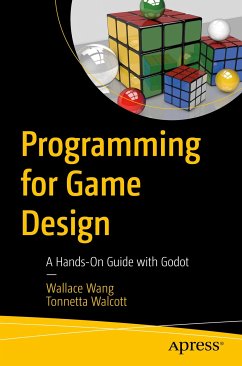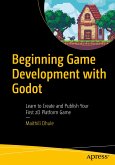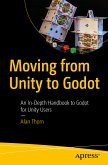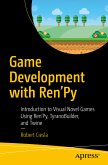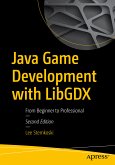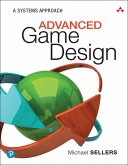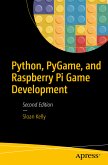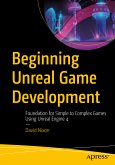43,95 €
43,95 €
inkl. MwSt.
Sofort per Download lieferbar

22 °P sammeln
43,95 €
Als Download kaufen

43,95 €
inkl. MwSt.
Sofort per Download lieferbar

22 °P sammeln
Jetzt verschenken
Alle Infos zum eBook verschenken
43,95 €
inkl. MwSt.
Sofort per Download lieferbar
Alle Infos zum eBook verschenken

22 °P sammeln
- Format: PDF
- Merkliste
- Auf die Merkliste
- Bewerten Bewerten
- Teilen
- Produkt teilen
- Produkterinnerung
- Produkterinnerung

Bitte loggen Sie sich zunächst in Ihr Kundenkonto ein oder registrieren Sie sich bei
bücher.de, um das eBook-Abo tolino select nutzen zu können.
Hier können Sie sich einloggen
Hier können Sie sich einloggen
Sie sind bereits eingeloggt. Klicken Sie auf 2. tolino select Abo, um fortzufahren.

Bitte loggen Sie sich zunächst in Ihr Kundenkonto ein oder registrieren Sie sich bei bücher.de, um das eBook-Abo tolino select nutzen zu können.
- Geräte: PC
- ohne Kopierschutz
- eBook Hilfe
- Größe: 11.22MB
Andere Kunden interessierten sich auch für
![Beginning Game Development with Godot (eBook, PDF) Beginning Game Development with Godot (eBook, PDF)]() Maithili DhuleBeginning Game Development with Godot (eBook, PDF)47,95 €
Maithili DhuleBeginning Game Development with Godot (eBook, PDF)47,95 €![Moving from Unity to Godot (eBook, PDF) Moving from Unity to Godot (eBook, PDF)]() Alan ThornMoving from Unity to Godot (eBook, PDF)47,95 €
Alan ThornMoving from Unity to Godot (eBook, PDF)47,95 €![Game Development with Ren'Py (eBook, PDF) Game Development with Ren'Py (eBook, PDF)]() Robert CieslaGame Development with Ren'Py (eBook, PDF)35,95 €
Robert CieslaGame Development with Ren'Py (eBook, PDF)35,95 €![Java Game Development with LibGDX (eBook, PDF) Java Game Development with LibGDX (eBook, PDF)]() Lee StemkoskiJava Game Development with LibGDX (eBook, PDF)60,95 €
Lee StemkoskiJava Game Development with LibGDX (eBook, PDF)60,95 €![Advanced Game Design (eBook, PDF) Advanced Game Design (eBook, PDF)]() Michael SellersAdvanced Game Design (eBook, PDF)33,95 €
Michael SellersAdvanced Game Design (eBook, PDF)33,95 €![Python, PyGame, and Raspberry Pi Game Development (eBook, PDF) Python, PyGame, and Raspberry Pi Game Development (eBook, PDF)]() Sloan KellyPython, PyGame, and Raspberry Pi Game Development (eBook, PDF)35,95 €
Sloan KellyPython, PyGame, and Raspberry Pi Game Development (eBook, PDF)35,95 €![Beginning Unreal Game Development (eBook, PDF) Beginning Unreal Game Development (eBook, PDF)]() David NixonBeginning Unreal Game Development (eBook, PDF)43,95 €
David NixonBeginning Unreal Game Development (eBook, PDF)43,95 €-
-
-
Produktdetails
- Verlag: Apress
- Seitenzahl: 508
- Erscheinungstermin: 13. Februar 2024
- Englisch
- ISBN-13: 9798868801907
- Artikelnr.: 69979143
Dieser Download kann aus rechtlichen Gründen nur mit Rechnungsadresse in A, B, BG, CY, CZ, D, DK, EW, E, FIN, F, GR, HR, H, IRL, I, LT, L, LR, M, NL, PL, P, R, S, SLO, SK ausgeliefert werden.
- Herstellerkennzeichnung Die Herstellerinformationen sind derzeit nicht verfügbar.
Wallace Wang has been writing computer books for over 30 years, including Steal This Computer Book, Microsoft Office for Dummies, Beginning Programming for Dummies, Beginning iPhone Development with SwiftUI, and The Structure of Game Design" to name just a few. He created the board game, "Orbit War," for Steve Jackson Games, which simulated satellite warfare in the near future. He also writes screenplays and won first place in Scriptapalooza's 2023 screenwriting competition.
Tonnetta Walcott is a writer, podcaster, gamer, and programmer who is passionate about video games and technology. She graduated from San Diego State University with a English Bachelor's and has a certificate in Computer Programming. After being offered an internship at Sony Online Entertainment, Tonnetta learned computer programming (C++, Java), web development, and game design using the Unity and Godot game engines. Tonnetta has programmed a simulation to chess, Battleship, and a matching concentration game, and is currently working on a game called NinChibi, where tiny chibi ninjas play tag in a single player and multiplayer mode. The NinChibi game is built with the Godot game engine.
Tonnetta Walcott is a writer, podcaster, gamer, and programmer who is passionate about video games and technology. She graduated from San Diego State University with a English Bachelor's and has a certificate in Computer Programming. After being offered an internship at Sony Online Entertainment, Tonnetta learned computer programming (C++, Java), web development, and game design using the Unity and Godot game engines. Tonnetta has programmed a simulation to chess, Battleship, and a matching concentration game, and is currently working on a game called NinChibi, where tiny chibi ninjas play tag in a single player and multiplayer mode. The NinChibi game is built with the Godot game engine.
Chapter 1: Why learn programming with the Godot game engine.- Chapter 2: Getting to know Godot.- Chapter 3: Writing scripts.- Chapter 4: Storing data in variables.- Chapter 5: Mathematical operations.- Chapter 6: Branching statements.- Chapter 7: Looping statements.- Chapter 8: Understanding arrays.- Chapter 9: Understanding dictionaries.- Chapter 10: Functions.- Chapter 11: Object-oriented programming.- Chapter 12: Getting input from the user.- Chapter 13: Shooting projectiles.- Chapter 14: Adding projectiles to a player.- Chapter 15: Hitting enemies with projectiles.- Chapter 16: Displaying a user interface.- Chapter 17: Adding physics.- Chapter 18: Playing audio.- Chapter 19: Creating and using scenes.- Chapter 20: Using Signals.- Chapter 21: Creating a Simple Tic-Tac-Toe Game.
Chapter 1: Why learn programming with the Godot game engine.- Chapter 2: Getting to know Godot.- Chapter 3: Writing scripts.- Chapter 4: Storing data in variables.- Chapter 5: Mathematical operations.- Chapter 6: Branching statements.- Chapter 7: Looping statements.- Chapter 8: Understanding arrays.- Chapter 9: Understanding dictionaries.- Chapter 10: Functions.- Chapter 11: Object-oriented programming.- Chapter 12: Getting input from the user.- Chapter 13: Shooting projectiles.- Chapter 14: Adding projectiles to a player.- Chapter 15: Hitting enemies with projectiles.- Chapter 16: Displaying a user interface.- Chapter 17: Adding physics.- Chapter 18: Playing audio.- Chapter 19: Creating and using scenes.- Chapter 20: Using Signals.- Chapter 21: Creating a Simple Tic-Tac-Toe Game.
